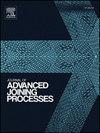Characterization of physical metallurgy of quenching and partitioning steel in pulsed resistance spot welding: A simulation-aided study
IF 4
Q2 MATERIALS SCIENCE, MULTIDISCIPLINARY
引用次数: 0
Abstract
This study mainly focuses on the microstructure evolution of QP980 steel during resistance spot welding and its influence on the mechanical performance of resistance spot welds which is a critical influencing factor on the quality of body-in-white at the service condition. It is observed that the thermomechanically engineered microstructure of QP980 steel changes to form metastable phases such as martensite in the fusion zone and the heat affected zone due to rapid cooling induced by the thermal cycle of the welding. A finite element modeling of the welding process was used to predict the weldment heat distribution, thermal history and microstructure evolution in different welding zones. The modeled thermal history of the weldments shows that the peak temperature in the four-pulse resistance spot welding is delayed because of pulsed welding conditions and holding times between the welding pulses. This heat management approach in pulsed welding prevents void formation. The modeled thermal history and rapid heating, and cooling conditions are discussed here to predict the microstructure evolution and transformation in the fusion and reheated zones. The modeled results were helpful in the prediction of the microstructure at different weld zones. Then the strategic links between the microstructure and mechanical performance of the welded alloy are discussed thoroughly. The microhardness profile of the weld is discussed from a microstructural point of view to disclose the physical metallurgy of the welds. Softening phenomena were not observed in the sub-critical heat affected zone.
脉冲电阻点焊中淬火和分区钢的物理冶金特性:模拟辅助研究
本研究主要关注 QP980 钢在电阻点焊过程中的微观结构演变及其对电阻点焊机械性能的影响,而机械性能是白车身在使用状态下质量的关键影响因素。研究发现,由于焊接热循环引起的快速冷却,QP980 钢的热机械工程微观结构发生了变化,在熔合区和热影响区形成了马氏体等易变相。焊接过程的有限元模型用于预测不同焊接区的焊接热分布、热历史和微观结构演变。焊接件的热历史模型显示,由于脉冲焊接条件和焊接脉冲之间的保持时间,四脉冲电阻点焊的峰值温度被延迟。脉冲焊接中的这种热量管理方法可防止空洞的形成。本文讨论了模型热历史、快速加热和冷却条件,以预测熔合区和再加热区的微观结构演变和转变。模型结果有助于预测不同焊接区的微观结构。然后深入讨论了焊接合金的微观结构与机械性能之间的战略联系。从微观结构的角度讨论了焊缝的显微硬度曲线,以揭示焊缝的物理冶金学。在亚临界热影响区未观察到软化现象。
本文章由计算机程序翻译,如有差异,请以英文原文为准。
求助全文
约1分钟内获得全文
求助全文

 求助内容:
求助内容: 应助结果提醒方式:
应助结果提醒方式:


